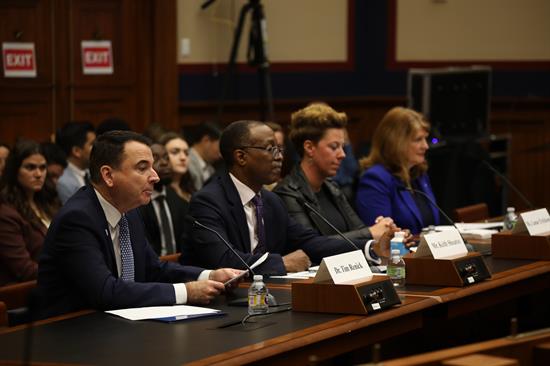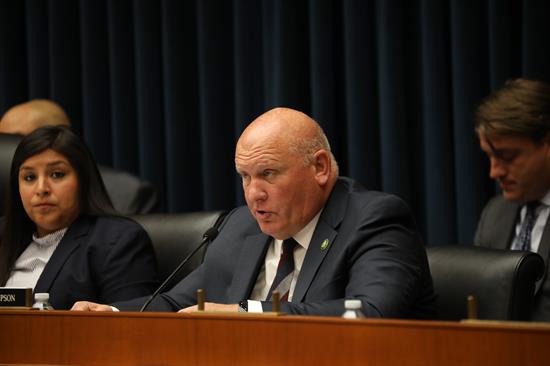E&W Blog
Hearing Recap: Postsecondary Innovation Edition
WASHINGTON, D.C.,
June 14, 2023
Today, the Higher Education and Workforce Development Subcommittee held a hearing entitled “Postsecondary Innovation: Preparing Today’s Students for Tomorrow’s Opportunities.”
“This traditional framework is at odds with the modern university experience and student,” said Chair Owens. “Over 30 percent of today’s students are non-traditional, meaning they could be 25 years or older, part-time enrollees, full-time workers, or in other unique situations.” With the help of insight from expert witnesses, the Committee began to map out legislative changes which would foster success for all students. Nobody understands student success better than Republican-invited witness Dr. Tom Renick, Executive Director of the National Institute for Student Success. Dr. Renick is renowned for his role in transforming Georgia State University into a national model for student success by making use of data-informed, innovative approaches. “The collective impacts have been profound. Georgia State’s graduation rate has increased by 70 percent, and we are graduating 3,500 more students every year than we were in 2010,” said Dr. Renick in his opening statement. These results are slowly being replicated across the country, but, according to Dr. Renick, “we are mounting this work against historically fierce headwinds.” One such headwind being that four in 10 students do not complete their college degree. The pandemic only exacerbated this problem, but witnesses came prepared with exciting solutions. Republican-invited witness Dr. Lori Carrell, Co-Director of the College-in-3 initiative, offered her experience as a leader on the cutting edge of college reform. “We need not just new, but dramatically different designs to achieve dramatically different results,” said Dr. Carrell in her opening statement. “That change is the audacious aspiration of the College-in-3 experiment.” Admittedly, not everyone is always receptive to change. In the past, Chairwoman Virginia Foxx (R-NC) has echoed this sentiment, often repeating, “They’ve always said, it’s easier to turn a battleship than to change education.” Nevertheless, Dr. Carrell’s vision is one worth pursuing. A three-year undergraduate experience is designed to “make not only a shorter program, but a better program,” which research shows would save students one full year of debt. Still, the program is also often met with resistance and misconceived as a credit hour cut. “That’s a reason that some might be fearful of attempting a three-year degree,” Dr. Carrell emphasized in an exchange with Rep. Bob Good (R-VA). To which Rep. Good replied, “In my experience, the more immersed and saturated and more intense the program, the more you retain and the more that it benefits you.” While some proposals, like College-in-3, are still in experimental stages, others seek to build on positive innovations already being employed in postsecondary institutions across the country. Chairwoman Foxx highlighted the work Republican-invited witness Mr. Keith Shoates, Chief Operating Officer at the Student Freedom Initiative, is doing to develop public-private partnerships. Most notably, these partnerships have helped HBCUs harness private sector funding to support their students with private income-contingent loans as an alternative to Parent PLUS loans, as well as opportunities such as internships and certification programs. In questioning, Chairwoman Foxx identified a familiar barrier to Congress helping foster these partnerships. “One of the challenges we have as policymakers is convincing stakeholders to abandon status quo policies that don’t help students and exacerbate the college cost problem,” she said. Public-private partnerships aren’t the only innovative approaches being stifled. Removing barriers limiting competency-based education, flexible credit transfers, Federal Work-Study reforms, and more are all potential legislative avenues the Committee can and will explore. Finally, Rep. G.T. Thompson (R-PA) focused his questions on the rapid growth of remote learning during and since the pandemic. Addressing Dr. Carrell, Rep. Thompson asked, “Any thoughts on how we can effectively expand online learning opportunities at other institutions of higher education, including career and technical education?”
Dr. Carrell is right, and she gets at the broader point. The past culture on college campuses—emblematic of inflexible policies—caters to an exclusive class of learner that is not representative of the entire student body. The conventional “four-year” college experience is not the norm, and that mindset in many ways detracts from the goal of preparing students for lifelong careers. Bottom Line: The Committee is advancing new and innovative policies so that colleges best prepare today’s learners for tomorrow’s workforce. |
Browse News
Stay Connected


